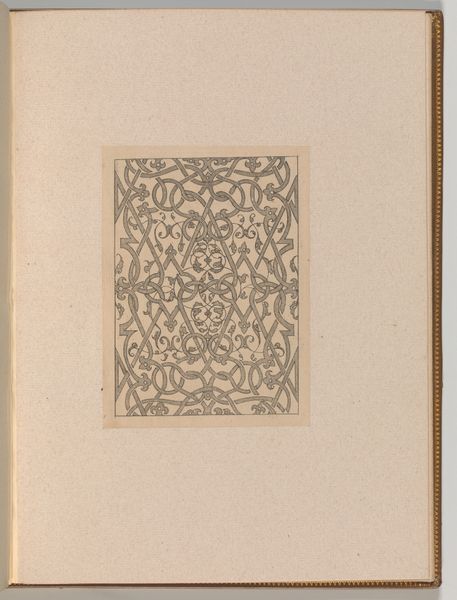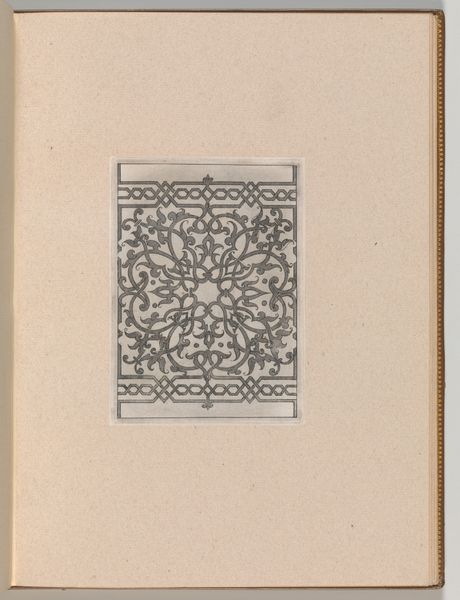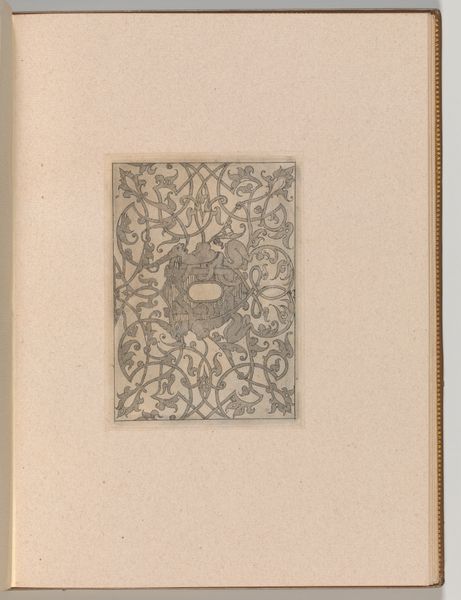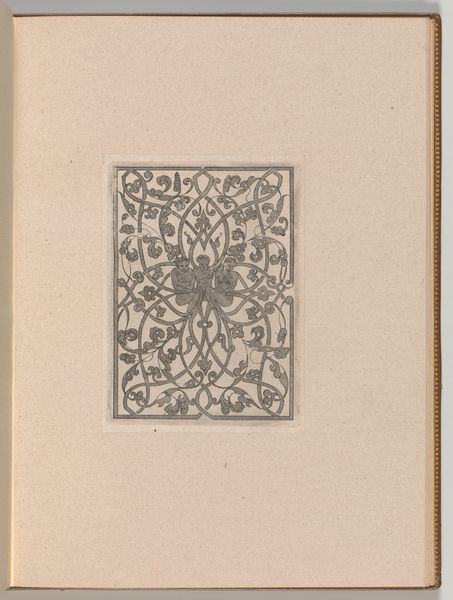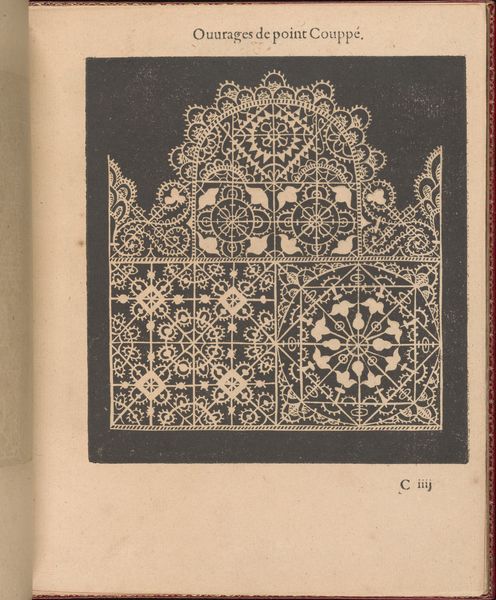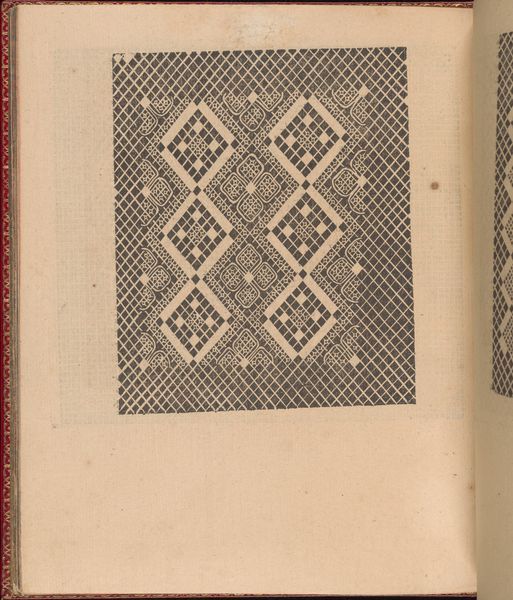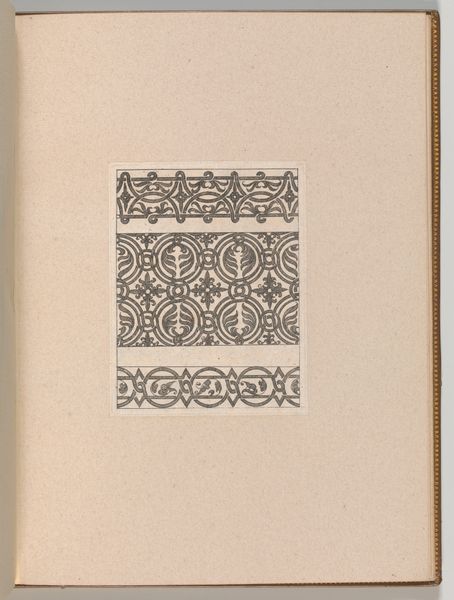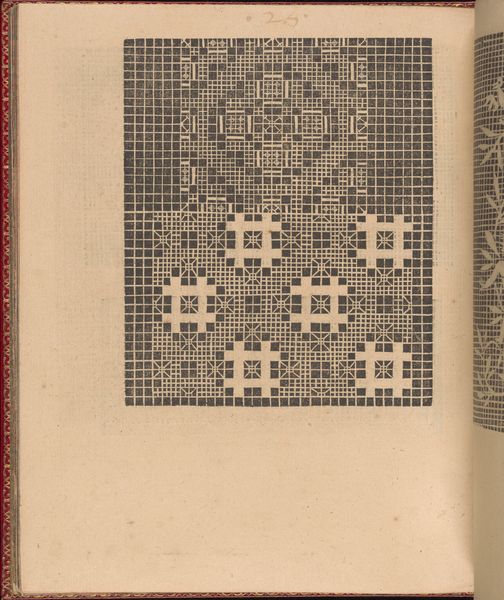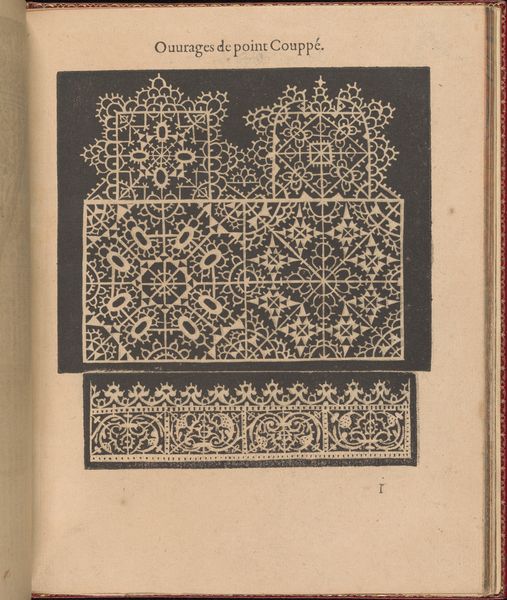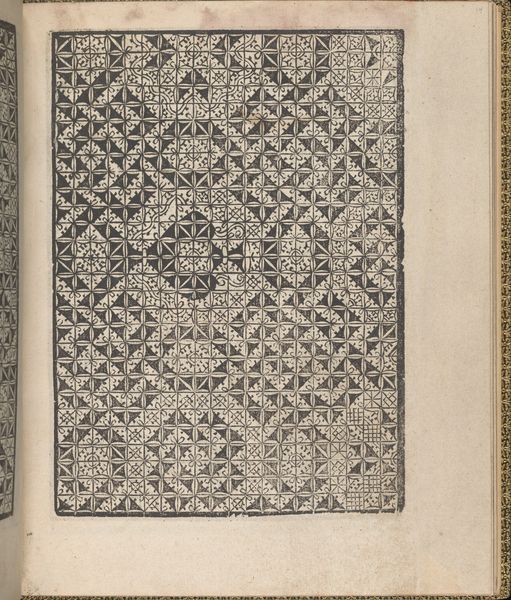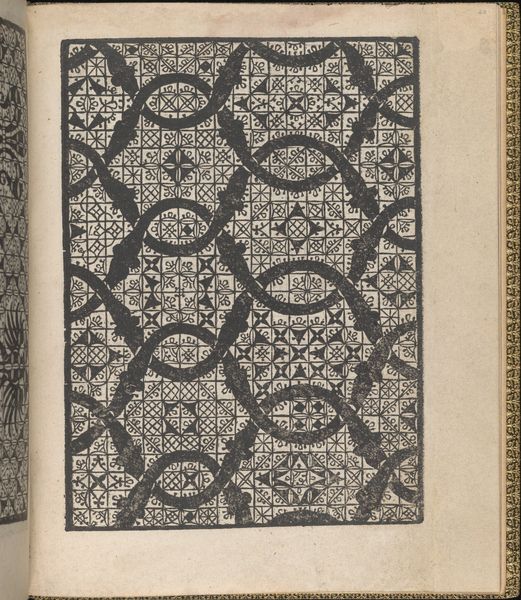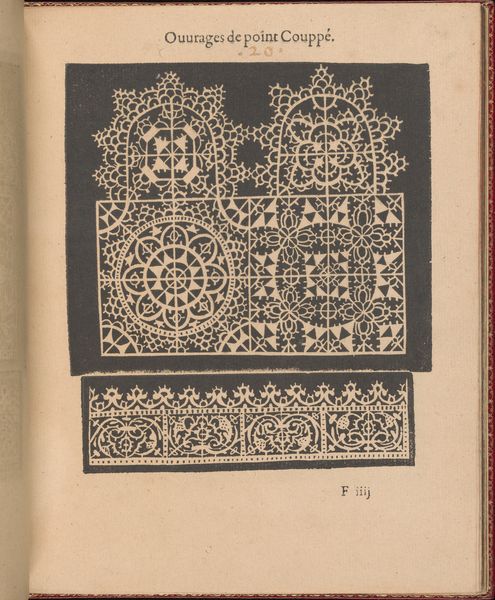
Copies after the 'Livre contenant passement de moresques' 1800 - 1900
0:00
0:00
drawing, print
#
drawing
# print
#
geometric
#
line
#
islamic-art
Dimensions: Sheet: 4 13/16 × 3 9/16 in. (12.2 × 9 cm) Plate: 4 1/2 × 3 5/16 in. (11.5 × 8.4 cm) Overall: 10 1/16 × 7 7/8 in. (25.5 × 20 cm)
Copyright: Public Domain
Editor: This is a fascinating print, "Copies after the 'Livre contenant passement de moresques,'" made sometime between 1800 and 1900. It appears to be ink on paper and showcases this intricate geometric pattern. It looks like something from a book of designs, maybe for textiles? I'm struck by the precision of the lines. What stands out to you in this piece? Curator: The reproductive nature of prints, like this, is very revealing. These “copies” highlight the transfer of designs and the democratizing effect of printmaking. Think about the materials involved – the paper, the ink, the printing press itself. Each stage represents labor, from the papermaker to the printer. Also, the presence of Islamic-art motifs in 19th-century Europe indicates an interest in and appropriation of, but also potentially a misinterpretation, or perhaps even exploitation of different cultures. Editor: Appropriation in what way? Curator: Well, who was commissioning and consuming these prints, and for what purpose? Were these patterns meant to inspire high art or be used in everyday manufactured goods, essentially cheapening the original artform they're derived from? The context of production and consumption informs our understanding of its value, or lack thereof, as "art." What was its function? Who was employing this particular imagery at this period? Editor: That's a good point; considering how these designs were disseminated and used is crucial. So, rather than focusing on the artist's intention, we are examining the socio-economic forces that shaped its creation and usage? Curator: Precisely! It pushes us to consider how the materials, the labor, and the modes of distribution intersect with the cultural significance of these Moorish designs in a European context. Editor: I never considered printmaking through that lens before. Thanks for opening my eyes to a fresh perspective. Curator: The beauty of art history is in these multifaceted perspectives, showing us new aspects in familiar things!
Comments
No comments
Be the first to comment and join the conversation on the ultimate creative platform.
